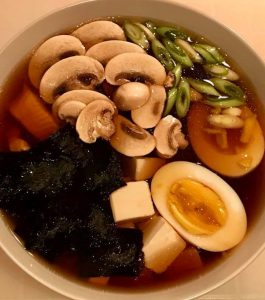Many have become aware that the Japanese drink a cup of hot miso soup a day. Several in Europe have traveled on holiday in Japan and have noticed that, while others have heard about it.
In Japan, the classic Japanese miso soup is made from scratch. Beside fermented soybean paste, the soup is packed with vitamins and minerals that the body enjoys.
As the soup primarily contains miso paste, it has a high content of vegetable protein, which is healthier than animal product. Soybeans are a low-fat product as they do not contain fat such as a steak.
The soup is also rich in vitamins and minerals. Japanese seaweed is also included in the soup.In Japan, there are many different types of seaweed. Not all seaweed varieties are suitable for miso soup. Of course, it is important to choose the right one otherwise the soup tastes less good.
But such overall is seaweed is a very healthy vegetable. It is the vegetable in the world that contains the most vitamins and minerals.
Read more about Noodle Soup course for beginners, where healthy and nutritious Japanese ingredients and raw materials are a must in the traditional Japanese noodle soups.
_
Zoë has lectured and held sushi courses for A. P. Moller – Maersk, Hugo Boss Nordic, Novo Nordisk, Novartis, Velux, Gorrissen Federspiel, Beierholm revision, Elbek & Vejrup and many more.




